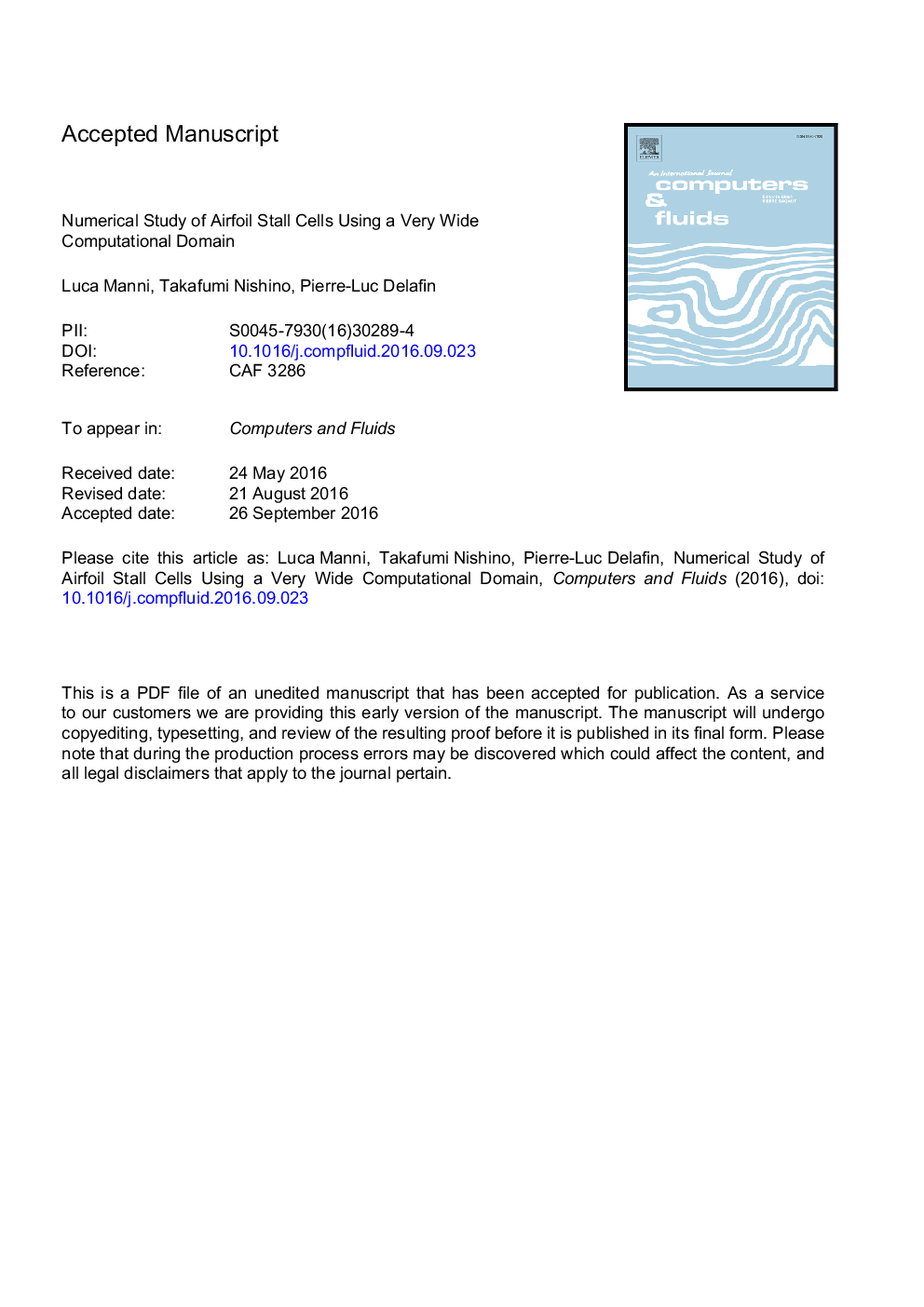| Article ID | Journal | Published Year | Pages | File Type |
|---|---|---|---|---|
| 5012051 | Computers & Fluids | 2016 | 28 Pages |
Abstract
The formation of stall cells over a NACA 0012 airfoil at a Reynolds number of one million has been investigated numerically, using unsteady Reynolds-averaged Navier-Stokes (URANS) and delayed detached-eddy simulation (DDES) approaches. The simulations are performed with a very wide computational domain (10 chord length) to minimize the influence of spanwise periodic boundary conditions. For the URANS simulations, four different spanwise mesh resolutions are tested to determine the minimum resolution required to capture the formation of stall cells. Both URANS and DDES results show a sudden decrease in lift and increase in drag between 16° and 17° angle of attack, accompanied by a significant change of separated flow patterns. Stall cell structures are observed clearly in the URANS solutions between 17° and 19° with a spanwise spacing of about 1.4 to 1.8 chord length, which agrees well with a theoretical prediction based on the slope of the lift curve in this angle-of-attack range. The DDES results show much more complex flow patterns over the airfoil at these high angles of attack, although the spectral analysis of wall shear stress suggests the existence of flow structures having a similar spanwise length scale to the stall cells.
Keywords
Related Topics
Physical Sciences and Engineering
Engineering
Computational Mechanics
Authors
Luca Manni, Takafumi Nishino, Pierre-Luc Delafin,
